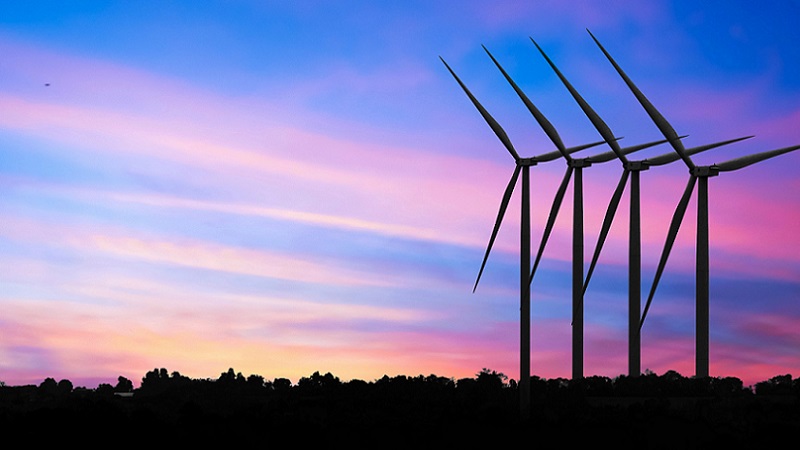Renewable energy development in China
September 19 2018

1. China is now the world leader in installed capacities of hydro, solar photovoltaic (PV) and wind power. China currently accounts for 28.5 percent of the global hydroelectricity generation, 32.8 percent and 31.9 percent of global solar PV and wind power installed capacity, respectively.[1]
2. In 2017 China added:
- 7.3 gigawatts (GW) of hydropower capacity (excluding pumped storage) accounting for 38 percent of new global installations, taking total capacity to 312.7 GW.[2]
- 53.1 GW of solar PV capacity, accounting for 54 percent of new global installations, taking total capacity to 131.1 GW.[3]
- 19.7 GW of wind capacity, accounting for 38 percent of new global installations,[4] taking total capacity to 198 GW.[5]
3. In 2017 renewable energy comprised 26.4 percent of China’s total power generation.[6] This was on par with the global average of 26.5 percent and up from 20.2 percent five years ago.[7] In comparison, generation from renewables comprised 16.9 percent of Australia’s total power generation.[8]
4. In 2017 electric vehicle (EV) sales in China increased by 69 percent to 0.6 million units, accounting for 50 percent of the global total.[9]
For the first half of 2018, 50 percent of global plug-in passenger cars and 70 percent of global electric commercial vehicles were sold in China.[10]
5. There are around 386,000 electric buses on the world’s roads. Ninety-nine percent of these are in China.[11] The city of Shenzhen has electrified its entire fleet of 16,359 public buses.[12]
6. The rapid development of renewable energy in China has exceeded the capacity of existing grids in some regions, forcing curtailment.[13] But progress is being made in building new infrastructure and giving renewable energy higher preference in dispatch. In 2017 curtailment for solar PV was around six percent, down 4.3 percentage points compared with the previous year. Curtailment for wind power was reduced to 12 percent, down from 17 percent.[14]
7. On December 19 2017 China launched a three-year plan to host the world’s largest emissions trading scheme.[15] Despite only covering the power generation sector initially, China’s carbon market will total 3.5 billion tonnes, almost double the European Union’s carbon market, currently the world’s largest.[16] The first phase in China’s plan focuses on infrastructure construction. The second will be on system testing. Nation-wide trading is expected to start in 2020.[17]
This fact sheet was prepared by Xunpeng Shi, Principal Research Fellow, Australia-China Relations Institute, University of Technology Sydney.
Sources
[1] BP, ‘Statistical review of world energy 2018’ <https://www.bp.com/en/global/corporate/energy-economics/statistical-revi.... There is no reported installed capacity in this report. Instead, the hydroelectricity generation data are used.
[2] International Hydropower Association, ‘2018 Hydropower status report – sector trends and insights’, May 2018 <https://www.hydropower.org/sites/default/files/publications-docs/2018_hy...
[3] International Energy Agency, ‘Snapshot of global photovoltaic markets 2018’, pp. 3-4, 10, 15, April 2018 <http://www.iea-pvps.org/fileadmin/dam/public/report/statistics/IEA-PVPS_....
[4] REN21, ‘Renewables 2018: global status report: 2018’, p.44, 2018.
[5] IN-EN.com, [2017年中国风电装机数据火热出炉], April 4 2018 <http://www.in-en.com/article/html/energy-2267140.shtml>. (in Chinese)
[6] Wenjuan Dong and Ye Qi, ‘Utility of renewable energy in China’s low-carbon transition’, Brookings, May 18 2018 <https://www.brookings.edu/2018/05/18/utility-of-renewable-energy-in-chin....
[7] China National Renewable Energy Centre, China renewable energy 2012, Beijing: China Economic Press.
[8] Clean Energy Council, ‘Clean energy Australia report’, 2018 <https://www.cleanenergycouncil.org.au/policy-advocacy/reports/clean-ener....
[9] EV-Volumes, ‘China plug-in sales for 2017-Q4 and full year – update’, <http://www.ev-volumes.com/news/global-plug-in-sales-for-2017-q4-and-the-....
[10] UN Environment’s Economy Division, Frankfurt School-UNEP Collaborating Centre for Climate & Sustainable Energy Finance and Bloomberg New Energy Finance, ‘Global trends in renewable energy investment 2018’ <https://europa.eu/capacity4dev/unep/documents/global-trends-renewable-en....
[11] Ibid.
[12] Daniel Cooper, ‘China’s Shenzhen city electrifies all 16,359 of its public buses’, Engadget, December 29 2017 <https://www.engadget.com/2017/12/29/china-shenzhen-public-electric-buses/>.
[13] Note: Curtailment refers to energy that is produced but that cannot be taken up by the grid. Brian Publicover, ‘BNEF shines light on China’s solar curtailment problem’, PV Magazine, October 26 2017 <https://www.pv-magazine.com/2017/10/26/bnef-shines-light-on-chinas-solar...
[14] Data for 2017 from Asia Europe Clean Energy (Solar) Advisory Co. Ltd (AECEA), ‘China 2017 – what a year with 53 GW of added solar PV! What’s in for 2018!’, Briefing Paper – China Solar PV Development, January 2018 (provided by Frank Haugwitz, AECEA); data for 2016 from China National Energy Board, cited in National Energy Administration, ‘Wind grid operation in 2017’, February 1 2018 <http://www.nea.gov.cn/2018-02/01/c_136942234.htm>.
[15] ‘China launches nationwide carbon trading system’, Xinhua, December 19 2017 <http://www.xinhuanet.com/english/2017-12/19/c_136838026.htm>.
[16] Hal Harvey and Hu Min, ‘The China carbon market just launched, and it’s the world’s largest. Here’s how it can succeed’, Forbes, December 19 2017 <https://www.forbes.com/sites/energyinnovation/2017/12/19/the-china-carbo....
[17] National Development and Reform Commission, [国家发展改革委关于印发《全国碳排放权交易市场建设方案(发电行业)》的通知]. <http://www. ndrc.gov.cn/zcfb/gfxwj/201712/t20171220_871127.html>. (in Chinese)

